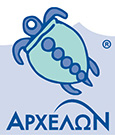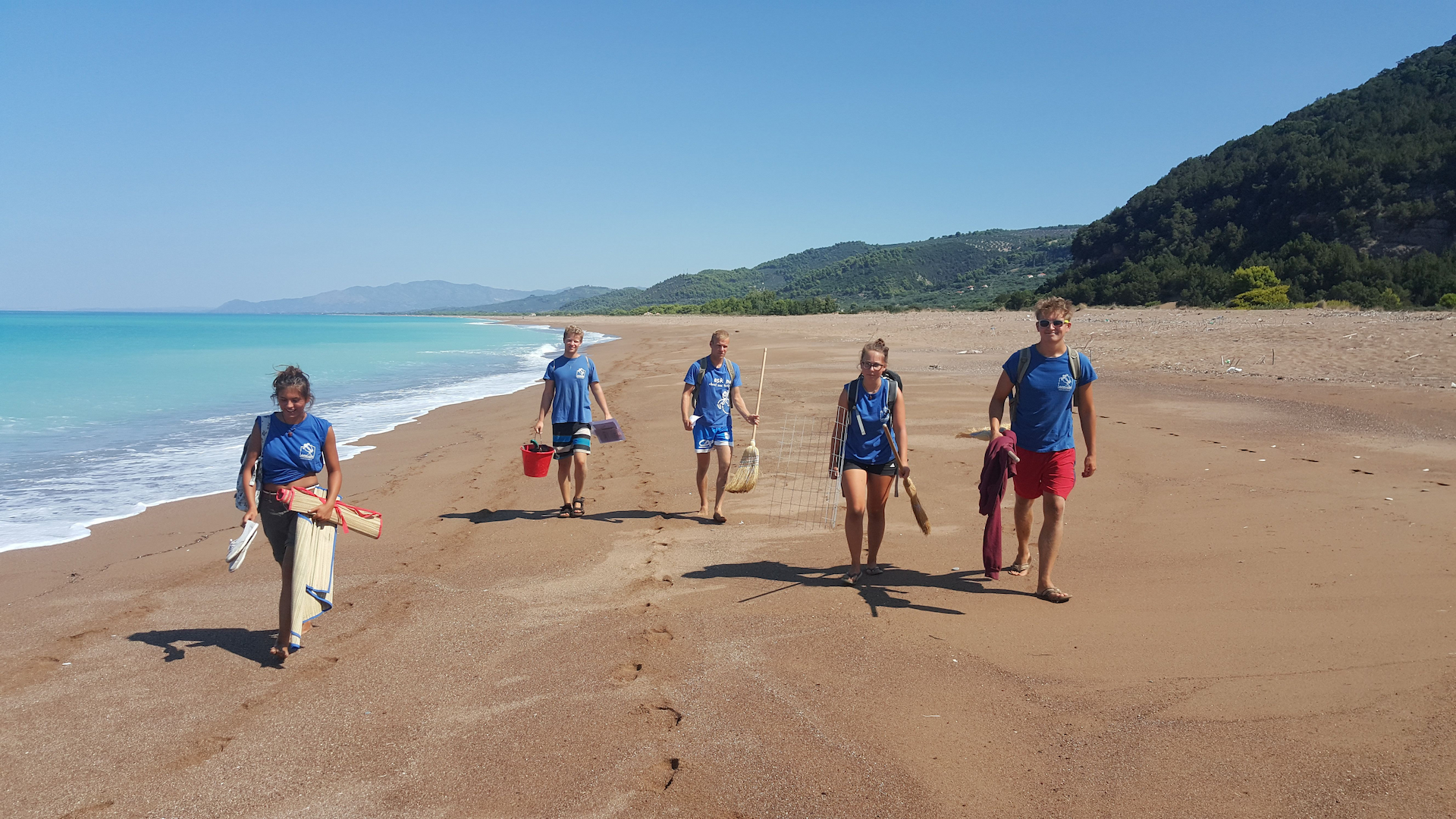Nest Monitoring and Protection
When it's time to reproduce, adult sea turtles of the Mediterranean migrate back to their nesting areas. Mating occurs during migration and also in the waters near the nesting beaches. Shortly after mating, females approach the beaches to lay their eggs in the sand.
Greece hosts the largest breeding population of the Loggerhead sea turtle (Caretta caretta) in the Mediterranean. Protecting nesting beaches significantly contributes to the conservation efforts for sea turtle populations.
ARCHELON operates 7 Projects aimed at studying, recording, monitoring and protecting the sea turtle reproductive activity (from nesting to hatching) in Zakynthos, Crete (Rethymno, Chania, Messara) and the Peloponnese (Kotychi, Kyparissia Bay, Romanos, Koroni, Lakonikos Bay, SE Lakonia). The effort made on the nesting beaches is systematic and meticulous. Every year (May - October), trained ARCHELON volunteers/researchers defy the heat, the long hours and the long distances to collect data and protect turtles, nests and hatchlings, covering 75-110 kilometers of the Greek coastline. ARCHELON's Monitoring and Protection Projects in Zakynthos and Kyparissia Bay began in 1984 and are among the longest-running in the world. The annual reproductive success of sea turtles can be affected by various natural phenomena (weather, habitat loss, predation) as well as human activities on the nesting beaches (light pollution, noise pollution, occupation of available space by beach furniture). To counter these threats, ARCHELON volunteers/researchers follow international protection protocols and:
- mark and identify nesting females to monitor the breeding population,
- locate and record new nests to study the long-term evolution of nesting,
- record violations, threatening incidents and dangers to sea turtles on the nesting beaches,
- place protective cages and informative signs on new nests to protect them from trampling or predation,
- relocate nests at risk of flooding or light pollution,
- shade nests and hatchlings to combat light pollution,
- excavate nests after hatching to determine hatching success.
Kyparissia Bay is now the nesting area with the largest breeding population of the loggerhead sea turtle in the Mediterranean. The number of nests recorded in 2024 in the nesting core of the region (6,700 nests) confirms the upward trend observed since 2006 and is a result of the long-term nest-protection measures implemented by ARCHELON since 1992.
Sporadic Nesting
ARCHELON operates monitoring and protection projects on the beaches with the largest numbers of sea turtle nests in Greece. However, a small number of nests can also be found in other areas of the country (e.g. NW Peloponnese, Lefkada, Kos, Rhodes, etc.). During their travels, some female individuals may nest on coasts that are completely unknown to us. These "sporadic” nests can appear anywhere in Greece, a common phenomenon due to the country's extensive coastline.
ARCHELON does not have the capacity and means to monitor all these beaches. However, these nests are also important to protect. This is often done with the help of local residents or visitors who may find nests or hatchlings. ARCHELON is informed of these incidents by citizens and provides appropriate instructions for their protection. By reporting and recording sporadic nests, valuable data is collected for the better understanding of the phenomenon.
- The study of the appearance of sporadic nests sheds light on the movements of sea turtles. These data are taken into account in the study of sea turtle populations.
- Knowledge of the location of nests allows for the protection of nests and the improvement of nest management strategies.
- Informing the public about sporadic nesting encourages all citizens who care about nature and the environment to be observant and contribute to the protection of wildlife.

